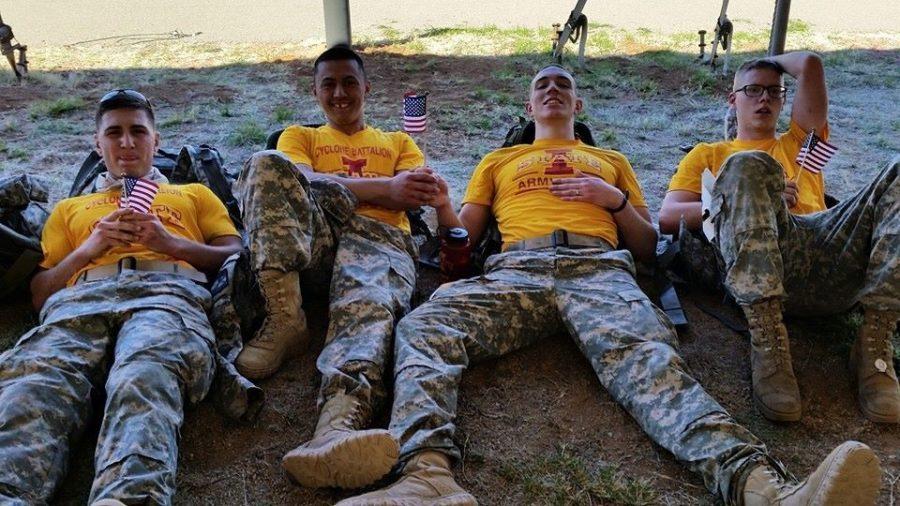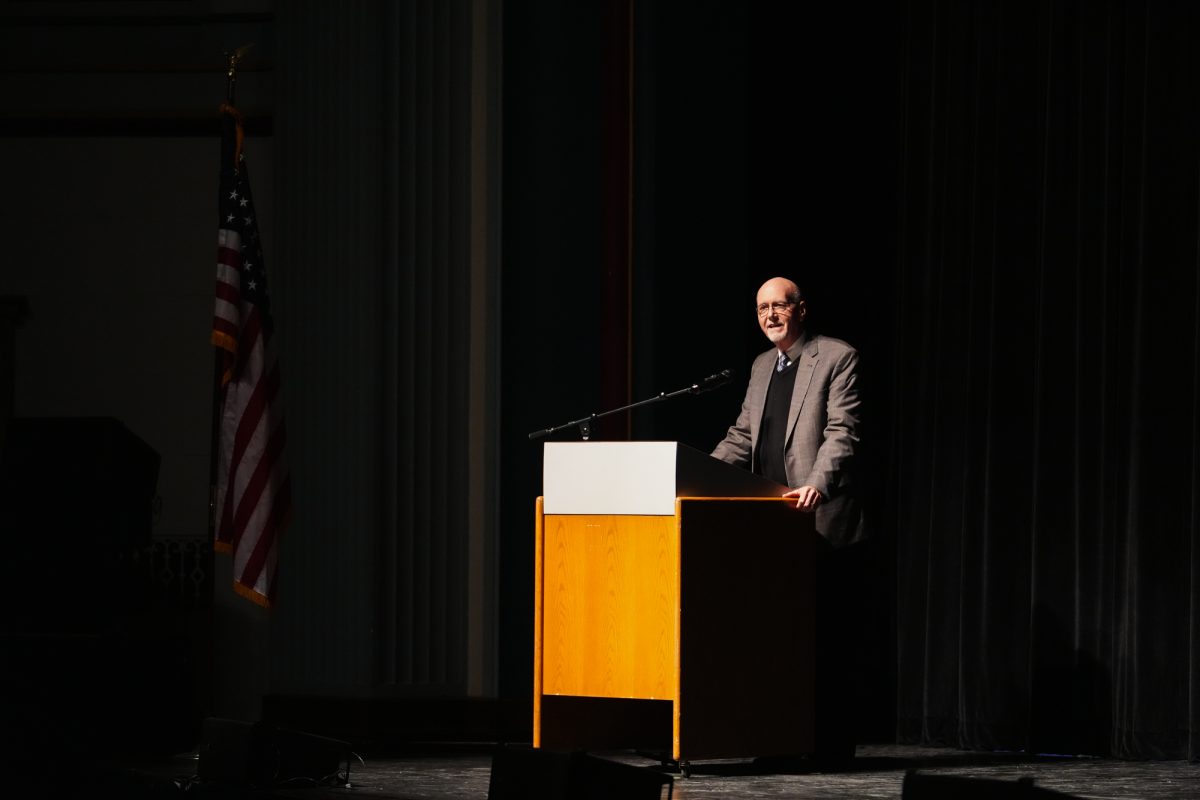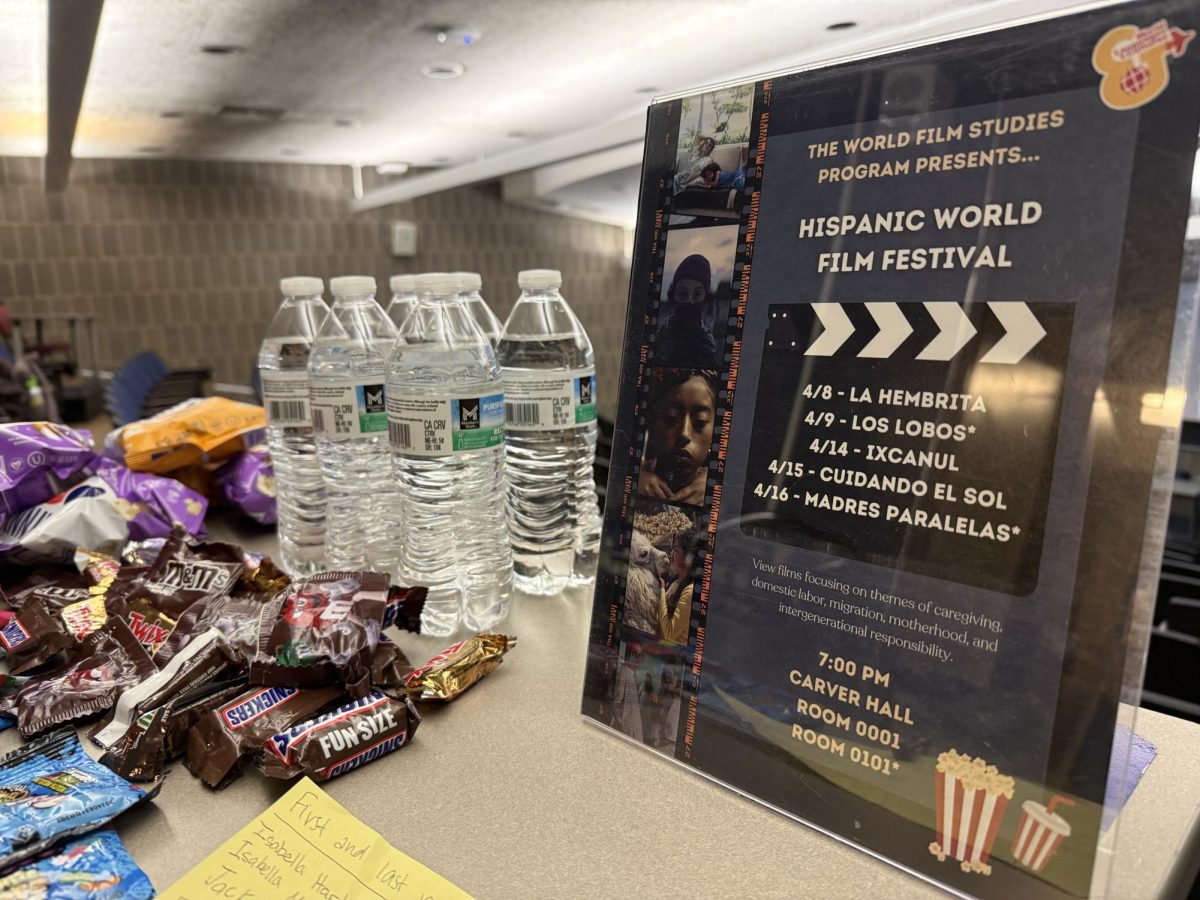Cadets participate in marathon through New Mexico desert
March 31, 2015
At mile 15 of a marathon through a desert, an Army ROTC cadet’s boot stepped into deep, loose dirt, causing her to twist her ankle.
With more than 10 miles left, she kept going. She refused medical attention for another three miles, where medics recommended she drop out. She finished.
“Her eyes were really excited to see me [at the finish],” said Emma Diamond, cadet and freshman in animal science, who assisted with the trip. “And then she was like, ‘I need medical attention right now.’”
Joyce Mercado, freshman in kinesiology and health, and eight other cadets in the Cyclone Battalion ran and marched 26.2 miles for the Bataan Memorial Death March at White Sands Missile Range, N.M. on March 22.
The march the cadets participated in honors the American and Filipino soldiers from World War II who walked a torturous 65 miles to prisoner of war camps when Luzon, the Philippine island they were defending, was surrendered to Japanese forces on April 9, 1942.
Approximately 75,000 soldiers were forced to make the death march and thousands died of starvation and beatings by Japanese guards.
Aaron Hett, Arthur Khan, Kyle Schmidt, Benjamin Baur and Aleczander Martys competed as a team in the heavy division, placing No. 12 out of 29 teams, finishing in 7:59.
Other cadets competing individually were Bradford Schuler, Ryan Brunner and Christian Nelson. Sgt. First Class Ryan Dabel and Master Sgt. Christopher Shaiko, instructors of military science and tactics, also competed.
Dedicating themselves to this set cadets apart and showed their true character, Shaiko said.
Schuler, sophomore in management, was the first individual competitor from the Cyclone Battalion to finish.
Schuler finished in with a time of 6:37, placing 15th.
Brunner and Nelson placed No. 60 and No. 92, respectively.
Mercado placed 18th in the female individual light division with no rucksack and a time of 7:41. The other participants marched carrying rucks weighing at least 35 pounds on their backs.
The course was pavement, dirt roads, sand and gravel that led into mountains.
“Eventually I kind of just phased out and focused on the person in front of me,” Mercado said. “Wherever they stepped, I stepped and I just followed them until we got out.”
Mercado said she learned how her mind works during the race and realized that one moment of pain is worth more in the end.
“It really taught me that no matter how bad it can get, you can keep going,” she said. “It’s only in your mind. Your body can do whatever your mind tells you.”
Hett, senior in mechanical engineering who organized the trip and led training, said the mental aspect of the march is “unbelievable.”
Hett said he got a sense for the mental toughness of the American and Filipino prisoners of war who had to keep going or die.
“Your body can go through such ridiculous amounts of strain it’s not even funny,” Hett said.
Cadets left the desert with a new perspective on the survivors of the 1942 march.
“We did 26 miles. Those guys did 65 with no food and water every two miles,” said Martys, freshman in construction engineering. “Just being in the desert gave me a huge realization that those guys went through something incredible.”
Nelson, junior in kinesiology and health, said the experience was humbling.
“What we went through was nothing compared to what they did as prisoners of war,” Nelson said.






